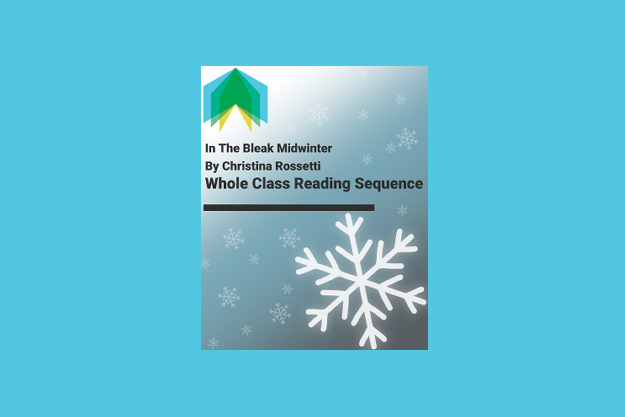The Polar Express
Image from the Primary English Advent Calendar created by Alice Clarke
Creating a really worthwhile unit of work, whilst still marking Christmas, is one of my favourite activities of the festive season. In this short article I look at a few ways to use a high quality Christmas picture book as a vehicle for good literacy teaching and learning. The book I've chosen is 'The Polar Express' by Chris Van Allsburg. I haven't added age groups to the activities as many are generic but I hope there are sufficient to meet the specific needs of children from across the school. And if you like the ideas here, why not take a look at our Starting Points set for The Polar Express.
With any class the first thing I'd do with this text is make the most of the pictures. Providing the children with copies of the front cover without the title of the book offers opportunities for children to ask questions about the text, to make predictions about the book and for you to create anticipation about the story.
Conduct a picture walk of the text. You could use the classroom visualiser so that the text remains a mystery to the children. If you make copies of the pictures you could go on to re-use them for oral sequencing, for story planning and tor writing captions and sentences about the text.
Depending on the age of the children, either read the story or provide them with time to read the story in small groups. Focus their attention by asking them to note what they like and dislike, what puzzles them and what patterns they can see in the text. Aidan Chambers called this structure 'Tell me'. We have a version of Tell Me in our Graphic Organisers Pack.
The Polar Express is a Voyage and Return story (sometimes called a home-away-home story) – we've written about this narrative form before and have a collection of similar stories on our Pinterest boards. Try plotting the narrative with the children and see if they can see similarities between this text and others with a similar structure. They can then write their own stories about a magical journey to the North Pole.
Find as many opportunities as possible to stimulate writing by using the text. The story is written in the first person-past tense but try changing the narrative voice so that younger children can rewrite the story – you'll need to model what you'd like them to do: our Modelled Writing post may give you some ideas.
Provide children with the picture of the wolves. What are the wolves thinking? What are they saying to one another? What are they going to do next? This type of activity makes a great short writing opportunity to practise specific skills such as direct speech.
My copy of The Polar Express has a wonderful audio CD of the story narrated by Liam Neeson. Yours may not but do click through to the You Tube video below to make the most of his lyrical narration. If you're able, watch the film version of the story starring Tim Hanks. You could then ask the children which version of the story they liked most and why.
Whatever you choose to do with The Polar Express enjoy it, savour the opportunities and enjoy a great book with your class this Christmas.
If you enjoyed this post, you may like these Christmas posts:
This article was originally posted on November 28th, 2013. It was updated 8th December 2019, 13th October 2020 and 18th October, 2024.


















